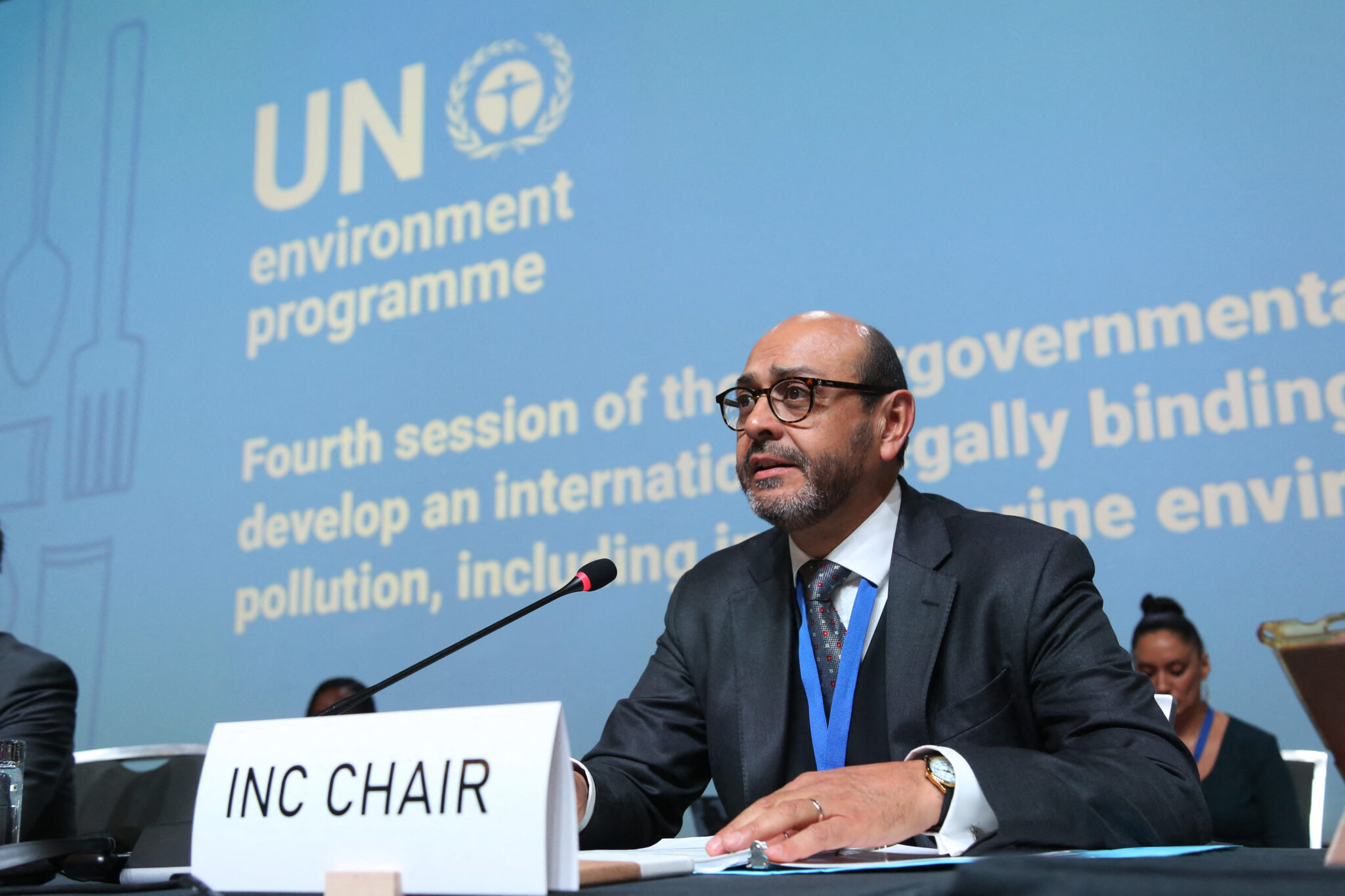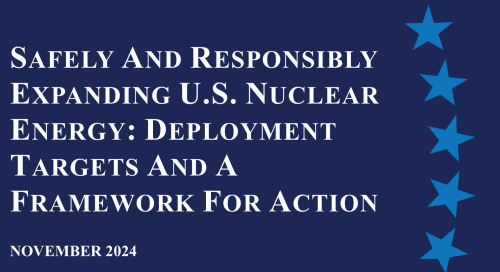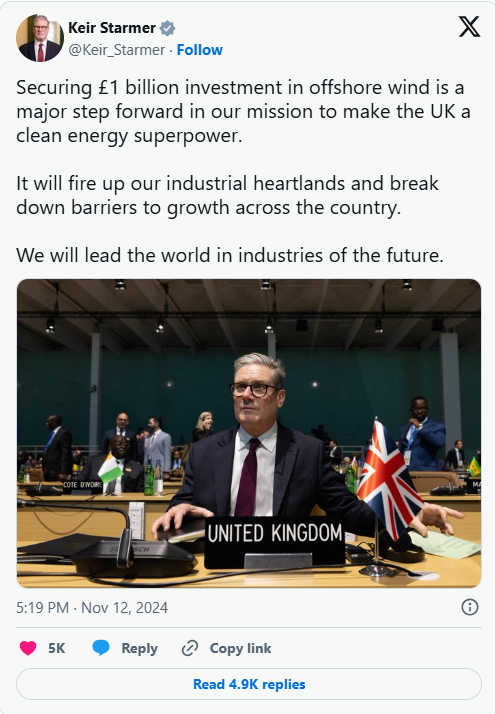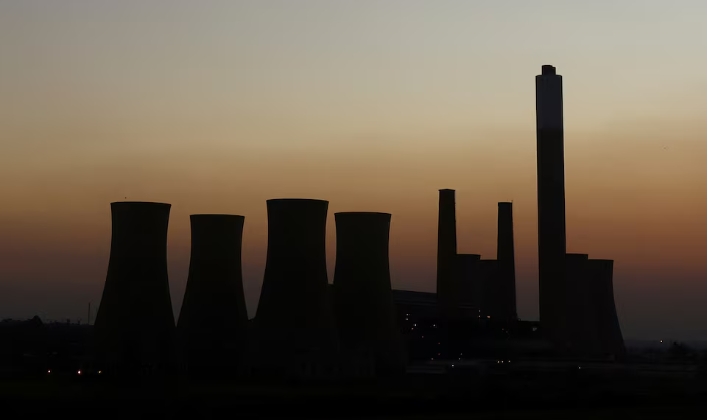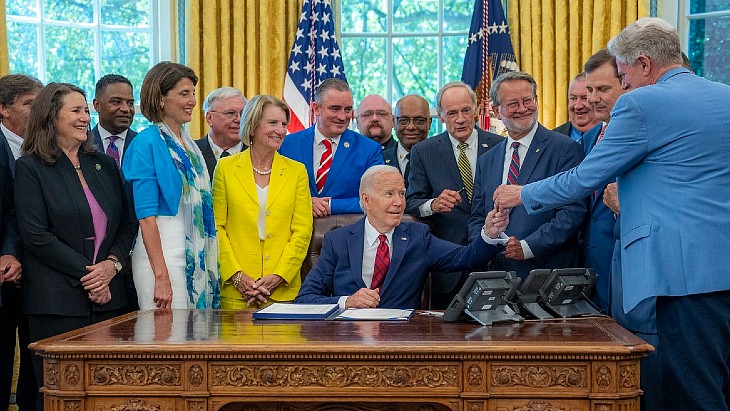Public perception of nuclear power in mitigating climate change does not depend exclusively on education, but is also determined to a large extent by each individual's world view, Jessica Lovering of the Breakthrough Institute said last week at the International Conference on Climate Change and the Role of Nuclear Power, held by the International Atomic Energy Agency at its headquarters in Vienna.
Jessica Lovering (Image: Breakthrough Institute)
Formerly its director of energy, Lovering is now the Breakthrough Institute's 'energy for growth' fellow. The California, USA-based environmental think tank "looks for ecological solutions to environmental problems", she said, and for opportunities to engage with "traditionally environmental" - and typically anti-nuclear - groups.
Aggregated polling results show that support for nuclear power in the USA has, for many years, "bounced around 50%", she said, which can be "demoralising" for the industry.
"That feels pretty bad but it's actually quite high compared to other countries. In 2005, a study looked at nuclear support across 18 OECD countries and the US was the second highest in support for nuclear, after South Korea," she said. Such results show that "there's a lot we've been doing that hasn't been working", she added.
Climate change
Many people have become supporters of nuclear power because they want to focus on realistic solutions to reducing greenhouse gas emissions (GHGs), she said. A large share of the general public, however, does not know that nuclear power is low-carbon and even believes that it emits GHGs. Public opinion on nuclear power is very responsive to "framing the facts" therefore, and depends on "how you're asking the question".
In a recent survey in the USA, about 30% of respondents said that nuclear was a very major cause of climate change, and 30% said it was a moderate cause. "So that's 60% of respondents saying that it's causing climate change in some way," she said, adding that a survey in 2003 had shown that around 70% of Americans thought that nuclear either emitted GHGs or they weren’t sure if it did.
Polling in other countries, such as the UK, Sweden and Japan, show a similar trend, she said. "There's a lot of uncertainty, but there's also a group that's very sure that nuclear power emits greenhouse gases, or is a significant contributor to climate change."
She added: "If you ask, 'Do you support nuclear power?' you might get 40%. If you say, 'Do you support nuclear power to produce electricity?' you might get 60%. That seems really silly because what did they think nuclear power is doing if not making electricity?"
Framing questions around the topic of climate change increases support in survey responses, she said. "A big study in the US asked, 'Do you support nuclear power?' and also 'Do you support nuclear power as a solution to climate change?' and the result increased by five percentage points … The UK has one of the most significant effects where, if you frame the question around climate, it increases support for nuclear by 20 percentage points."
Although that is a large difference, there are reasons to be cautious with such a result, she said. "A similar study in the UK, in 2010, found that those who were the most concerned about climate change, were the least likely to support nuclear. We see that in a lot of countries and it sort of makes sense. The traditional environmentalist community comes from a very anti-nuclear background and they are also the ones who want to take more action on climate change. It's disappointing but there are some signs that this is changing."
Right and left
"Nuclear power is a good tool for getting conservatives and those on the right to support action on climate change," she said, "and there is some optimism that strong opposition from the environmental community, from the far left, is softening."
She added: "Just last year we saw the Union of Concerned Scientists, which is a very longstanding anti-nuclear organisation in the US, call for federal and state policies to help preserve existing nuclear power plants because they were concerned that when they were shut down they would be replaced by fossil fuels. That was a big deal for them. They’re still not sure about new nuclear power plants, but at least they’re saying we’ve got to keep the existing ones running.
"Also, two very public faces of major action on climate change - Greta Thunberg and Alexandria Ocasio-Cortez, a US congresswoman - have opened up to nuclear, saying they are not necessarily strictly opposed. They say it has problems but, if you’re really serious about climate change, then you have to leave the door open to nuclear, to leave all options on the table. And that, while tepid, is a big change from where we were just 10 years ago."
Gender gap
Nuclear is a lot less polarised between political parties than other sources of energy, particularly fossil fuels, she said. "There is a big gap for expanding coal, natural gas, especially with hydraulic fracturing, whereas with nuclear the parties are much closer together. Unfortunately they are much closer together around 50% support."
Gender is one of the largest gaps, she said - bigger than age, political party, region, or familiarity with nuclear.
"It's even more than that - it's a gap between white males and everyone else," she said. "It's not unique to nuclear, which makes it interesting to study; it's actually across most risks, with varying degrees."
Research shows that the gender gap on the perceived risks of nuclear power is unrelated to education, familiarity with technology and age, she said, and it is exists in all countries. It is even evident among physicists, she said. "That’s really important to keep in mind - just educating people more doesn’t get rid of that gap."
An explanation may be 'cultural cognition', she said, which is how each individual's world view shapes their opinions on all sorts of topics. Support or opposition to nuclear power, then, is "part of who we are and how we feel about society and our place in it".
There are two dimensions to world view - hierarchical versus egalitarian and individualist versus 'communicalist' - and each of these four is a spectrum rather than a single point, she said.
Referring to studies on cultural cognition and the "risk-perception gender gap", such as by Dan Kahan at Yale University, she said that an individual's world view was a "three times greater predictor than just gender".
"People who are hierarchical and individualist tend to support nuclear power, and people who are egalitarians and communicalists are very opposed to it. And those tend to correlate with gender and with race. Among women, if you’re more of an individualist, you’re going to have more support for nuclear power," she said.
Lovering concluded that although general polling needs to focus on the benefits of nuclear power, such as by framing questions around climate change and energy security, educating the public alone "doesn't change most people's world views". This gap in world view, however, presents an opportunity for the nuclear industry, "because it explains why there hasn't been much movement in support for nuclear and public perception around risks in nuclear".
She said: "It's not just about coming up with new messaging, new graphics and a new PR campaign, because what you need to do is change the industry and change how the technology is deployed. The question is how can you get nuclear to appeal to egalitarians and communicalists? I think you can, in particular with much smaller nuclear, community owned nuclear, nuclear that doesn’t have to be financed by a state bank or from a foreign corporation with a huge loan, those sorts of things can help move the needle about how people feel about nuclear.
"It also means you need to change business models and how to engage with communities, particularly at the very early stage when you’re doing these projects, so that people feel ownership and that they're not being bulldozed about their energy choices. If we can get that part right, we have a big chance at changing the way people feel about nuclear technology going forward."

